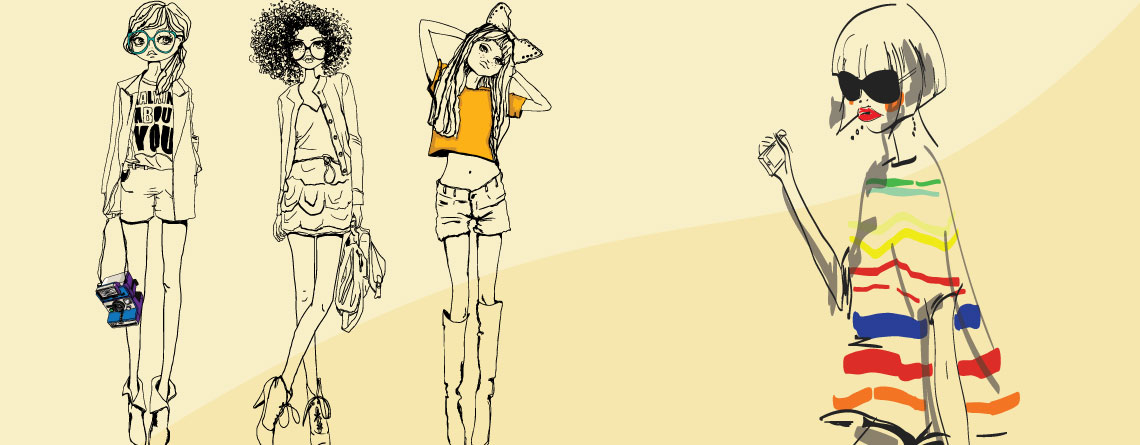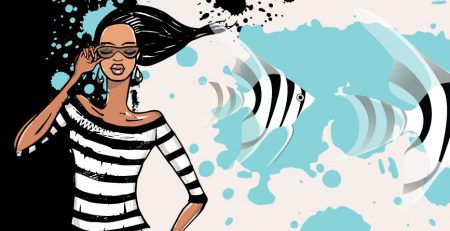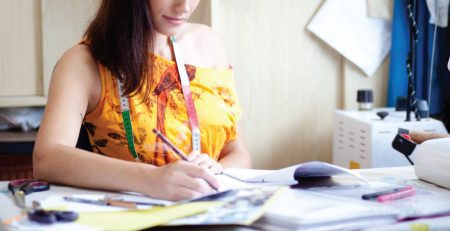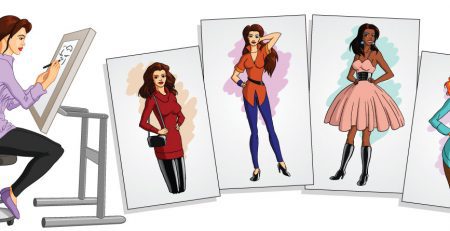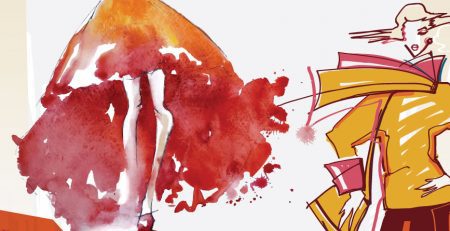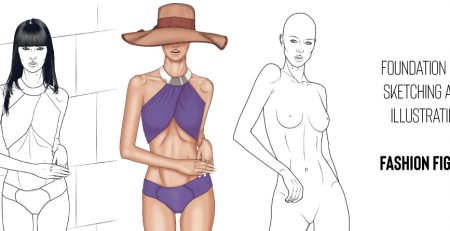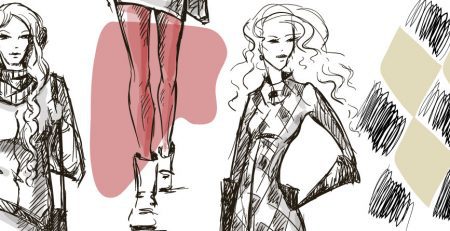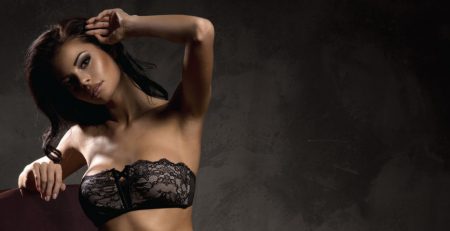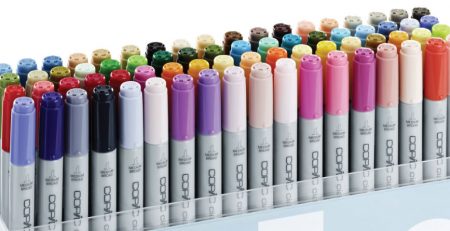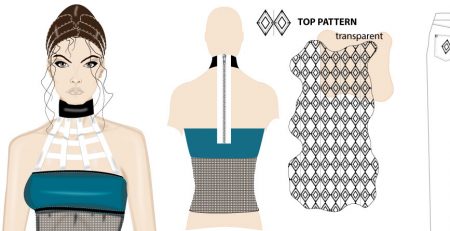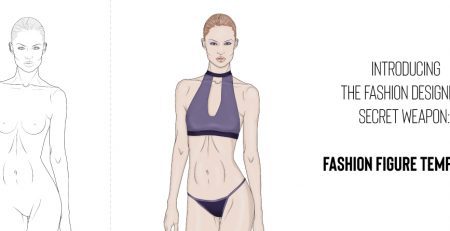The human body in proportion
As a fashion designer, you should always remember that clothes are made to be worn by real people. It is important, therefore, to gain some understanding of the structure and proportions of the human body.
There are obvious differences in the male and female forms, such as narrower waists and wider hips for females and squarer chests and faces for men. However, these variations should be incorporated once the basics have been sketched. Male and female bodies can both be broken down into the same simple block shapes. The head can be portrayed as an egg; the chest as a wastepaper basket; the pelvic area as a wide gymnastic vaulting horse; the limbs as tapering tubes; the feet and hands as cones; and the joints as balls. Once you have drawn these shapes in the relative sizes you can move them around like parts of a wooden drawing dummy to create the pose you want.
There is a convention in fashion illustration that a figure should be elongated to give it more elegance. However, that elongation should involve only the legs. A real-life body will measure around seven-and-a-half-head sizes; in fashion, this increases to eight-and-a-half heads (or nine-and-a-half heads), with the extra length added below the waist. All the other proportions of the basic block shapes should be based on reality.
When you come to draw from life, a grasp of these principles will help you enormously in understanding the mechanics of the figure in front of you. It is always good to remember that these “rules” are just conventions, but by gaining a basic understanding of the structure and proportions of the human body you will be better placed to break the rules later.

